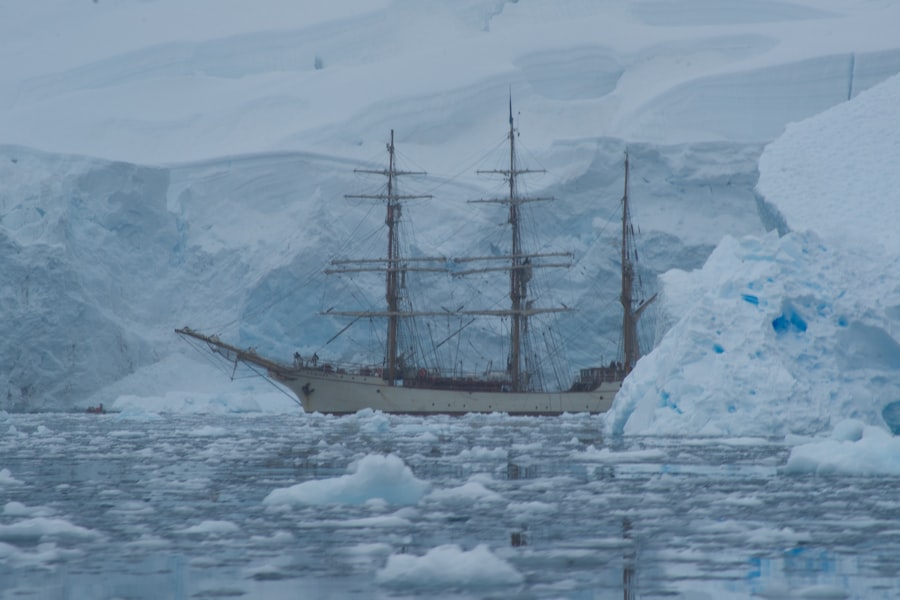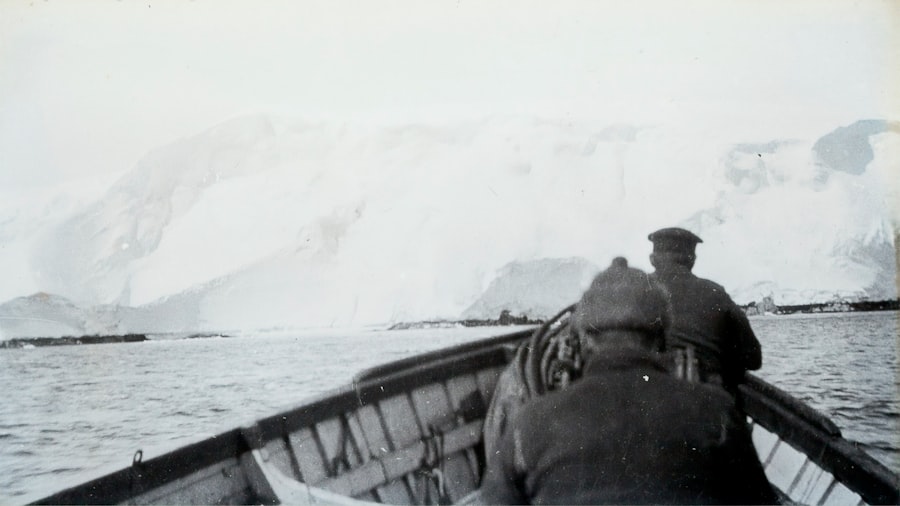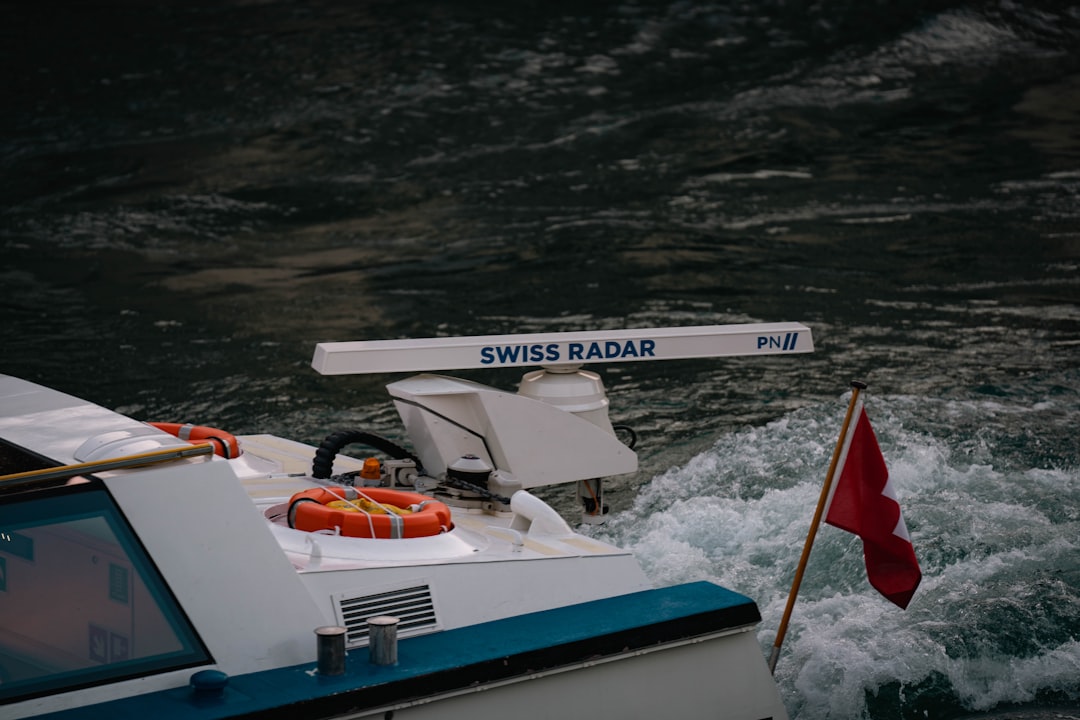The Drake Passage, a body of water located between the southern tip of South America and Antarctica, is renowned for its tumultuous seas and unpredictable weather patterns. This narrow stretch of ocean, measuring approximately 800 kilometers (500 miles) wide, serves as a critical maritime route for vessels traveling to and from the Antarctic region. Named after the English explorer Sir Francis Drake, who navigated these waters in the late 16th century, the passage has since become infamous for its challenging conditions.
The confluence of the Atlantic and Pacific Oceans creates a unique environment that can shift from calm to chaotic in a matter of moments, making it a focal point for maritime studies and safety protocols. Navigating the Drake Passage is not merely an adventure; it is a test of human resilience against nature’s might. The passage is characterized by strong currents, high winds, and large waves, which can pose significant risks to vessels.
As such, understanding the factors that influence survival rates in this region is crucial for both commercial shipping and scientific expeditions. The Drake Passage serves as a reminder of the power of nature and the importance of preparedness in maritime operations.
Key Takeaways
- Drake Passage is a treacherous body of water located between South America’s Cape Horn and the South Shetland Islands of Antarctica.
- Factors affecting survival rate in Drake Passage include extreme weather conditions, strong winds, and rough seas.
- Historical data on survival rates in Drake Passage show a mix of successful and unsuccessful voyages, with varying degrees of impact on the maritime industry.
- The survival rate in Drake Passage is crucial for the maritime industry, as it directly impacts the safety of ships, crew, and cargo.
- Strategies for improving survival rate in Drake Passage include advanced weather forecasting, route planning, and technological advancements in ship design and navigation systems.
Factors affecting survival rate in Drake Passage
Several factors contribute to the survival rate of vessels traversing the Drake Passage. One of the most significant elements is the weather, which can change rapidly and without warning. Storms can arise suddenly, bringing with them fierce winds and towering waves that can easily overwhelm even well-equipped ships.
The unpredictability of these weather patterns necessitates that crews remain vigilant and adaptable, ready to respond to changing conditions at a moment’s notice. Another critical factor is the design and construction of the vessels themselves. Ships that are built with reinforced hulls and advanced stabilization systems are better equipped to handle the harsh conditions of the Drake Passage.
Additionally, the experience and training of the crew play a vital role in ensuring safety. Well-trained personnel who understand the intricacies of navigation in challenging waters can make informed decisions that significantly enhance survival rates. Together, these factors create a complex interplay that determines the likelihood of successful passage through this formidable stretch of ocean.
Historical data on survival rates in Drake Passage

Historical data on survival rates in the Drake Passage reveals a mixed record of success and failure. Over the centuries, numerous vessels have attempted to navigate these treacherous waters, with varying degrees of success. Early explorers faced significant challenges due to limited technology and knowledge about the region’s conditions.
Many ships were lost to storms or navigational errors, leading to a high rate of casualties during the age of exploration. In more recent times, advancements in maritime technology and improved weather forecasting have contributed to better survival rates. Modern vessels equipped with sophisticated navigation systems and real-time weather updates have significantly reduced the risks associated with traversing the Drake Passage.
However, despite these advancements, incidents still occur, underscoring the need for continuous improvement in safety measures and preparedness strategies. Analyzing historical data provides valuable insights into patterns and trends that can inform future maritime operations in this challenging environment.
Importance of survival rate in Drake Passage for maritime industry
| Survival Rate | Importance |
|---|---|
| High | Ensures safe passage for maritime vessels |
| Low | Puts vessels at risk of damage or loss |
| Variable | Affects scheduling and reliability of maritime transport |
The survival rate in the Drake Passage holds significant implications for the maritime industry as a whole. For shipping companies, ensuring safe passage through this region is not only a matter of protecting human life but also safeguarding valuable cargo. The costs associated with accidents—ranging from loss of goods to potential legal liabilities—can be substantial.
Moreover, the Drake Passage serves as a gateway for scientific research and exploration in Antarctica. Research vessels often traverse these waters to study climate change, marine biology, and glaciology.
A high survival rate is crucial for these missions, as it ensures that scientists can safely conduct their work without undue risk. The maritime industry’s commitment to improving safety standards in the Drake Passage ultimately benefits not only commercial interests but also global scientific endeavors.
Strategies for improving survival rate in Drake Passage
To enhance survival rates in the Drake Passage, several strategies can be implemented by maritime operators. First and foremost, investing in advanced vessel technology is paramount. Ships equipped with state-of-the-art navigation systems, weather monitoring tools, and stabilization technologies are better positioned to withstand adverse conditions.
Regular maintenance and upgrades to existing vessels can also play a crucial role in ensuring their readiness for challenging voyages. Training and preparedness are equally important components of improving survival rates. Crews should undergo rigorous training programs that focus on emergency response, navigation techniques specific to the Drake Passage, and weather interpretation skills.
Simulated drills can help prepare crew members for real-life scenarios they may encounter while navigating these waters. Additionally, fostering a culture of safety within maritime organizations encourages vigilance and proactive measures among all personnel involved in operations.
Impact of weather conditions on survival rate in Drake Passage

Weather conditions are perhaps the most influential factor affecting survival rates in the Drake Passage. The region is notorious for its rapidly changing weather patterns, which can shift from calm seas to violent storms within hours. The presence of strong winds and powerful currents can create hazardous conditions that challenge even experienced mariners.
Understanding these weather dynamics is essential for making informed decisions about when to embark on a journey through the passage. Forecasting technology has improved significantly over recent years, allowing mariners to access real-time data about weather conditions in the Drake Passage. However, even with advanced forecasting tools, unexpected changes can still occur.
As such, crews must remain adaptable and prepared for sudden shifts in weather that could impact their voyage. Developing robust contingency plans that account for various weather scenarios can help mitigate risks and enhance overall safety during navigation.
Role of technology in enhancing survival rate in Drake Passage
Technology plays a pivotal role in enhancing survival rates in the Drake Passage by providing mariners with critical information and tools necessary for safe navigation. Modern vessels are equipped with sophisticated radar systems, GPS technology, and automated weather monitoring devices that allow crews to make informed decisions based on real-time data. These advancements enable mariners to anticipate potential hazards and adjust their routes accordingly.
Additionally, communication technology has improved significantly, allowing vessels to stay connected with shore-based support teams and other ships navigating nearby waters. This connectivity facilitates information sharing about current conditions and potential dangers, further enhancing safety measures. As technology continues to evolve, its integration into maritime operations will likely lead to even higher survival rates in challenging environments like the Drake Passage.
Case studies of successful and unsuccessful voyages through Drake Passage
Examining case studies of both successful and unsuccessful voyages through the Drake Passage provides valuable insights into best practices and lessons learned from past experiences. One notable success story involves a research vessel that successfully navigated the passage during a particularly stormy season by employing advanced weather forecasting tools and maintaining constant communication with other vessels in the area. The crew’s preparedness and adherence to safety protocols allowed them to complete their mission without incident.
Conversely, there have been instances where vessels encountered catastrophic failures due to inadequate preparation or failure to heed weather warnings. One such case involved a cargo ship that attempted to cross the passage during an unexpected storm without proper stabilization equipment or trained personnel on board. The vessel capsized, resulting in loss of life and significant environmental damage.
These contrasting case studies highlight the importance of thorough planning, crew training, and adherence to safety measures when navigating through this perilous region.
Training and preparedness for navigating through Drake Passage
Training and preparedness are essential components for ensuring safe navigation through the Drake Passage. Maritime organizations must prioritize comprehensive training programs that equip crews with the skills necessary to handle emergencies effectively. This includes not only technical navigation skills but also crisis management training that prepares crew members for high-stress situations they may encounter while at sea.
Regular drills simulating various emergency scenarios should be conducted to reinforce crew readiness. These drills can cover a range of situations—from equipment failures to severe weather events—allowing crew members to practice their responses in a controlled environment. Additionally, fostering a culture of safety within maritime organizations encourages open communication about potential risks and empowers crew members to voice concerns or suggestions regarding safety practices.
Future outlook for survival rate in Drake Passage
The future outlook for survival rates in the Drake Passage appears promising due to ongoing advancements in technology and increased awareness of safety protocols within the maritime industry. As new technologies continue to emerge—such as artificial intelligence-driven navigation systems and enhanced weather prediction models—mariners will have access to even more accurate information that can inform their decision-making processes. Furthermore, collaboration among maritime organizations, regulatory bodies, and research institutions will likely lead to improved safety standards and best practices tailored specifically for navigating challenging waters like those found in the Drake Passage.
By prioritizing safety through innovation and education, stakeholders can work together to ensure that future voyages through this formidable passage are conducted with greater confidence and reduced risk.
Conclusion and recommendations for ensuring safety in Drake Passage
In conclusion, navigating the Drake Passage presents unique challenges that require careful consideration of various factors influencing survival rates. From unpredictable weather conditions to vessel design and crew training, each element plays a crucial role in determining outcomes during voyages through this treacherous region. As historical data illustrates both successes and failures, it becomes evident that continuous improvement is necessary for enhancing safety standards within the maritime industry.
To ensure safety in the Drake Passage moving forward, several recommendations can be made: investing in advanced vessel technology; prioritizing comprehensive crew training; fostering collaboration among industry stakeholders; and utilizing real-time weather forecasting tools effectively. By implementing these strategies collectively, maritime operators can enhance their preparedness for navigating one of the world’s most challenging bodies of water while safeguarding human life and protecting valuable resources at sea.
The Drake Passage is notorious for its treacherous waters and challenging conditions, making survival rates a topic of interest for many maritime enthusiasts and researchers. An article that delves into the intricacies of navigating this formidable stretch of ocean can be found on MyGeoQuest. This piece provides insights into the historical and modern-day challenges faced by vessels traversing the passage, as well as the advancements in technology that have improved survival rates over the years. For more detailed information, you can read the full article by visiting MyGeoQuest’s article on the Drake Passage.
WATCH NOW! Drake Passage: Earth’s Deadliest Waters Revealed
FAQs
What is the Drake Passage?
The Drake Passage is the body of water between the southern tip of South America and the northern tip of the Antarctic Peninsula. It is known for its rough seas and challenging sailing conditions.
What is the survival rate for crossing the Drake Passage?
The survival rate for crossing the Drake Passage can vary depending on the weather conditions and the experience of the crew. Generally, modern vessels and experienced crews have a high survival rate when crossing the Drake Passage.
What factors affect the survival rate in the Drake Passage?
Factors that can affect the survival rate in the Drake Passage include the weather conditions, the size and stability of the vessel, the experience of the crew, and the preparedness for emergencies.
Are there any safety measures in place for crossing the Drake Passage?
Yes, modern vessels that cross the Drake Passage are equipped with advanced navigation and communication systems, as well as safety equipment such as life rafts, survival suits, and emergency beacons. Additionally, experienced crews undergo rigorous training and are prepared for emergency situations.
What should passengers do to prepare for crossing the Drake Passage?
Passengers should follow the instructions and safety briefings provided by the crew, wear appropriate clothing for the cold and rough conditions, and be prepared for the possibility of seasickness. It is also advisable to consult with a medical professional before the journey, especially for those with pre-existing medical conditions.
